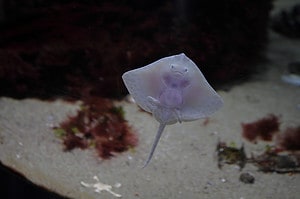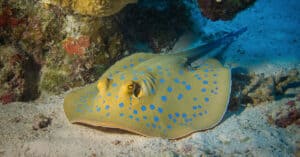When many people think about ocean creatures and animals that can hurt them, sharks are the first animals that come to mind. Yet, there is an animal that can be much more dangerous and one that people do not often think about when they step into the water.
One of the biggest rules in crossing into ocean territory is to shuffle your feet when entering the water. Significantly, this is called the Stingray Shuffle. Oceanic experts advise people to do this to avoid stepping on stingrays, which can cause a slashing cut to the foot, which can cause a lot of pain and may require antibiotics or a trip to urgent care.
Stingrays usually consist of eight different families of fish. Also, their entire bodies are formed from cartilage instead of bones. They exhibit coastal and freshwater areas all across the world. Therefore, there are many of them that inhabit the oceans, lakes, and rivers.
But what about the stingrays that reside in Florida? How many variations of them are there, and are they all equally dangerous? Today, we will explore seven stingrays found in Florida Waters while detailing who they are and what danger they bring to the table. This list is in no particular order.
7. Southern Stingray
One thing you will notice about southern stingrays is their brownish hue. Moreover, they change colors as they grow. Southern stingrays are common and usually have large bodies that look like a diamond, according to the Key West Aquarium.
They have the impeccable ability to camouflage their bodies into the sand to evade predators. Significantly, they have to avoid sharks. Some of the sharks that hunt them include hammerhead sharks and bull sharks.
Southern stingrays tend to frolic close to the shore. Ultimately, they do this to look for food. Southern stingrays are not aggressive. However, they will unleash a powerful sting if a human steps on them. The sting can be painful and take days, if not weeks, to heal. If you go into the water, you must watch out for one of the most common stingrays found in Florida.

You can find the southern stingray across the entire Florida coastline.
©iStock.com/Rob Atherton
6. Atlantic Stingray
The Atlantic stingray is all over the Atlantic coast, from Chesapeake Bay all the way to the Gulf of Mexico, according to the Jacksonville Zoo.
Atlantic stingrays are small, as they only grow up to 14.5 inches. Usually, they are brown and possess an elongated snout compared to other stingrays. Like other stingrays, they have long venomous tails they use to defend themselves.
Atlantic stingrays can stray into all kinds of water. Significantly, you will find them in freshwater lakes in addition to rivers and estuaries. It is one of the most popular stingrays found in Florida. Yes, they do sting people if someone steps on them. But the stings usually provide a really painful injury but are unlikely to kill anyone.

The Atlantic stingray is one of the common stingrays you will find in Florida waters.
©Johan-Holmdahl/ via Getty Images
5. Yellow Stingray
Yellow stingrays can inhibit muddy areas around coral reefs, according to the Key West Aquarium. Additionally, one of the unique factors about yellow stingrays is their ability to display different colors under specific biofluorescence. They have the ability to match the environment they are in.
They prefer grassy areas along the seafloor to look for small crustaceans and, occasionally, mollusks. Also, other animals on their diet include crab, as well as shrimp and lobster.
Like other stingrays, yellow stingrays do not intend to harm humans. However, if someone steps on them, they will swipe their venomous tail in self-defense. The best care for these wounds is to soak their injuries in hot water. Otherwise, a person with a sting should go to urgent care to prevent infection.
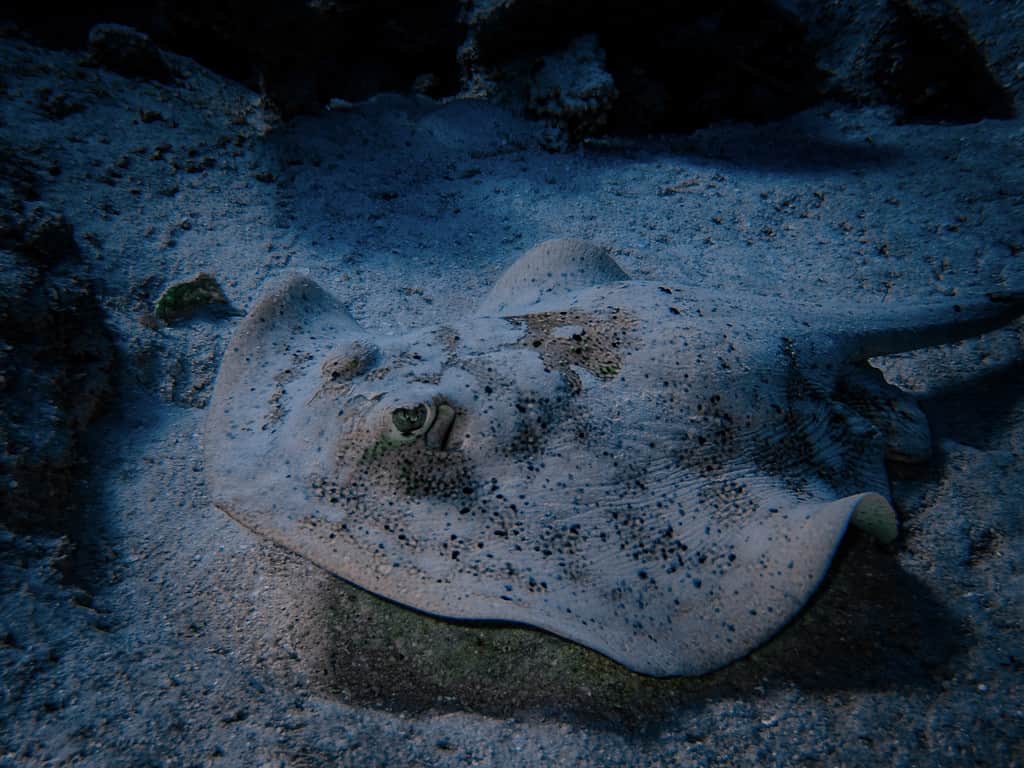
The yellow stingray sometimes exhibits different colors depending on the waters it explores.
©Erin Westgate/ via Getty Images
4. Rhinoptera bonasus
Sharks eat stingrays. Yes, it’s a common fact. But there is one stingray that looks exactly like a shark. Ironically, it causes unnecessary fear when people see its fin. We introduce you to the Rhinoptera bonatus, otherwise known as the cownose ray.
But the cownose ray is not a shark. No, it is a common stingray found along the Atlantic coast and an animal with a stout body and sides that resemble wings. What distinguishes them from other stingrays is their pointed pectoral fins that divide the top of the front of their heads.
One thing they often do when hunting is diving deep into the sand to draw sand through their mouths and then back out of their gill slits. Then, they use their flat tooth plates to eat prey that might be difficult to swallow. They have poisonous stingers but tend to avoid humans more than other stingrays.
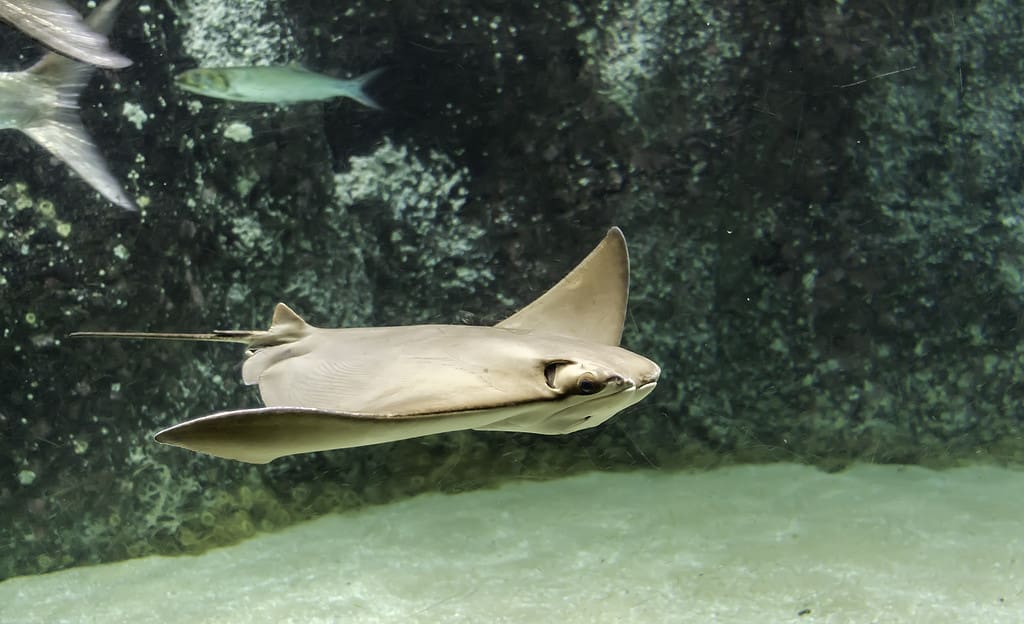
Many people mistake the Rhinoptera bonasus for a shark due to its similar fins.
©Lena Maximova/ via Getty Images
3. Smooth Butterfly Ray
The smooth butterfly ray is the first stingray on this list that does not sting. Yes, you read that correctly. The smooth butterfly ray has a tail but does not have the venomous spine that other stingrays have. Therefore, they are the least aggressive stingray out of all the forms that reside in Florida. These creatures usually reside in coastal waters, according to the Florida Fish and Wildlife Conservation Commission.
They possess an incredible wingspan that can grow up to 4.5 feet. Also, they frolic along the bottom of the ocean floor and enjoy eating small fish. They earn their name due to the fact that they resemble a butterfly when they swim. Also, they appear in three colors: green, brown, or gray.
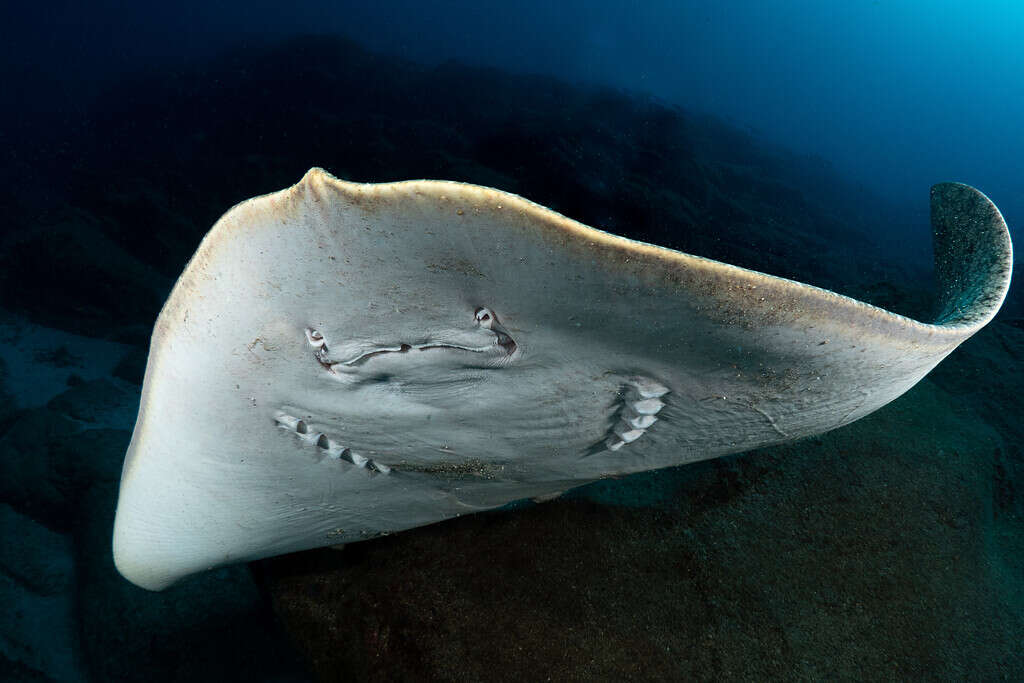
The smooth
butterfly
ray can flatten its body while swimming through the coastal waters of Florida.
©Michael-Workman/ via Getty Images
2. Roughtail Stingray
The roughtail stingray has a unique feature that allows them to grow a tail that is twice as long as their body, according to the National Aquarium. Amazingly, you can find them on both sides of the Atlantic Ocean. It is also among the most common stingrays found in Florida waters.
The roughtail stingray can grow up to seven feet long. Moreover, it can also weigh as much as 660 pounds. It is the biggest of the whiptail stingrays, according to the Florida Museum. Curiously, its body resembles the shape of a diamond that is usually dark brown with a yellow underbelly.
Another difference between the roughtail stingray and other stingrays is where you will find them. Ultimately, you will not find them on the sandy shores of the Florida beaches. Instead, you will likely see them in deeper waters. Offshore fishermen are more likely to encounter these creatures while out scouring for fish. Significantly, they will sting if someone threatens them or steps on them. But they are otherwise not aggressive.

The roughtail stingray is the largest of the whiptail stingrays.
©Rita Petcu/Shutterstock.com
1. Bluntnose Stingray
While the roughtail stingray has a tail that is twice its body length, the bluntnose stingray is the opposite. Instead, their tail is half its body length.
The roughtail stingray is medium-sized and can grow up to 39 inches. Moreover, their bodies resemble diamonds with a unique blunt snout. The coloring of the roughtail stingray will be a mixture of brown and yellow. Additionally, it is usually gray or yellow underneath.
You will find bluntnose stingrays in coastal areas. However, they are nocturnal, so you won’t be able to spot them easily during the daytime. This can be dangerous if you step on them. Like other stingrays, they will sting if someone steps on them.
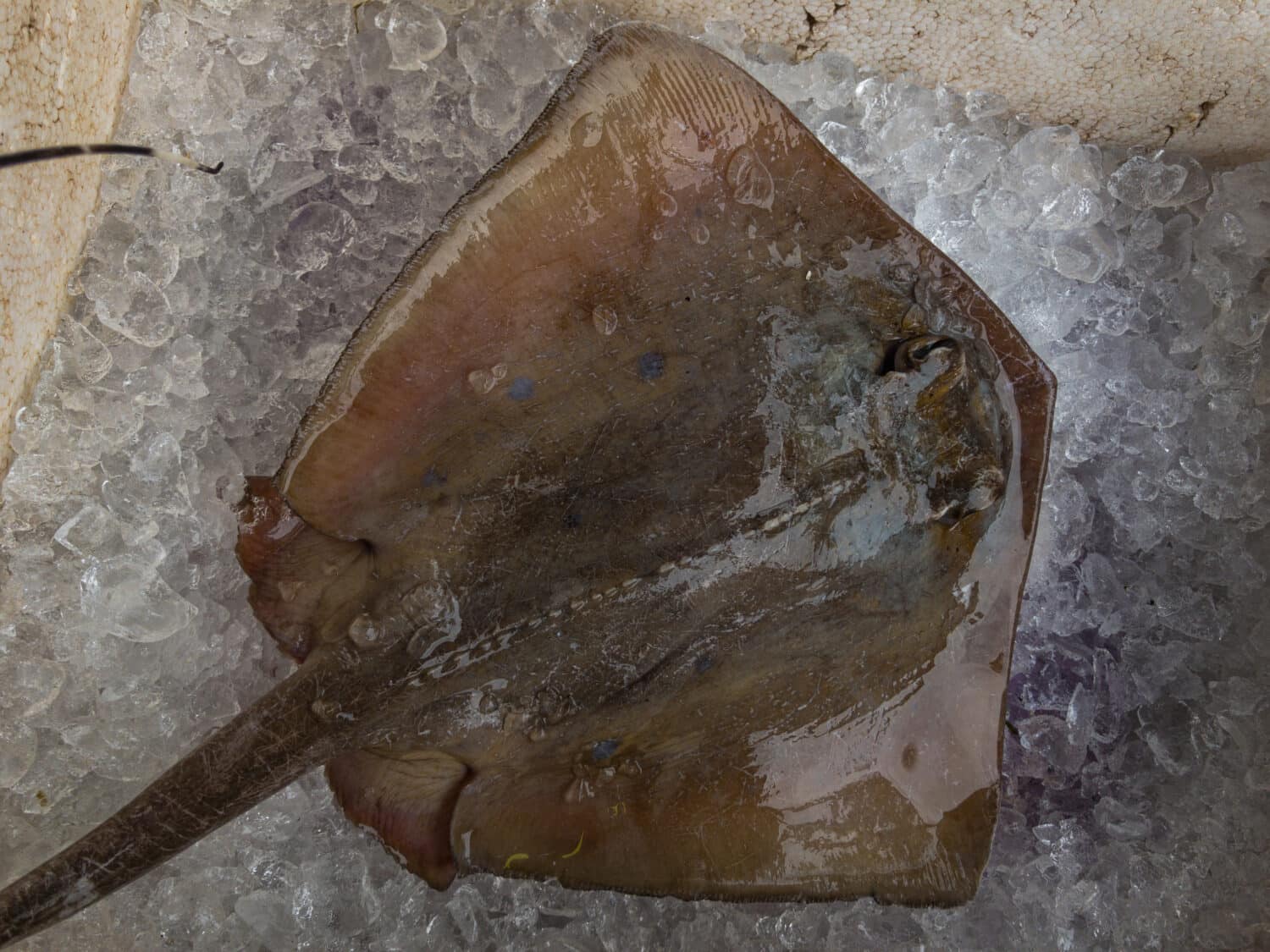
The bluntnose stingray possesses a tail that is half the length of his body.
©mkaproducer2/Shutterstock.com
Summary of 7 Stingrays Found in Florida Waters — Are Any Dangerous?
| Rank | Name of Stingray |
| 1. | Bluntnose Stingray |
| 2. | Roughtail Stingray |
| 3. | Smooth Butterfly Ray |
| 4. | Rhinoptera bonasus |
| 5. | Yellow Stingray |
| 6. | Atlantic Stingray |
| 7. | Southern Stingray |
Thank you for reading! Have some feedback for us? Contact the AZ Animals editorial team.





